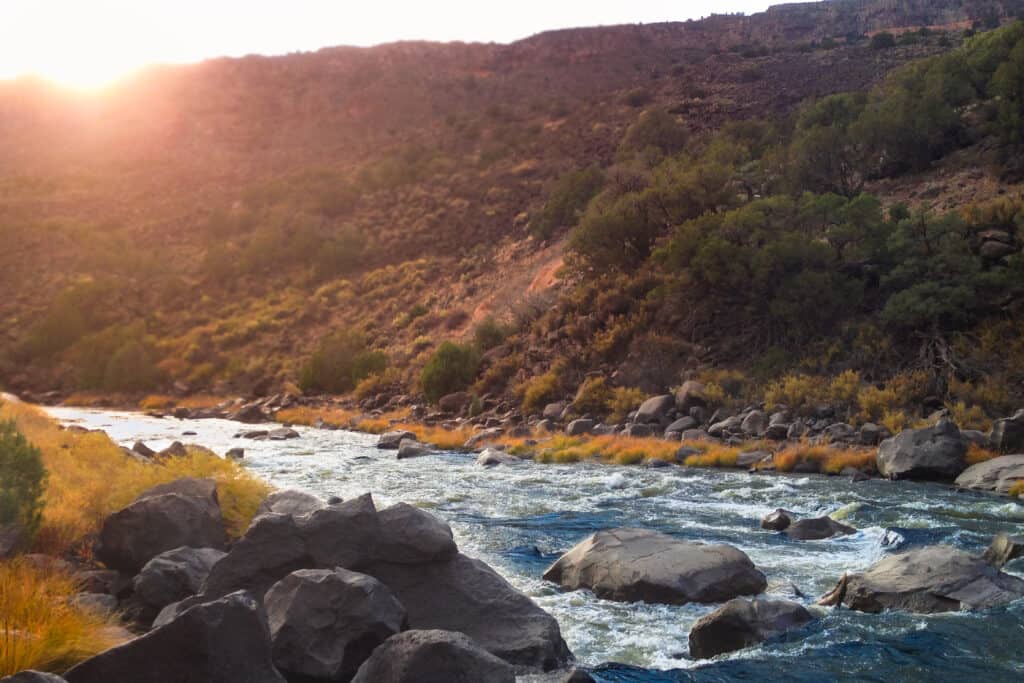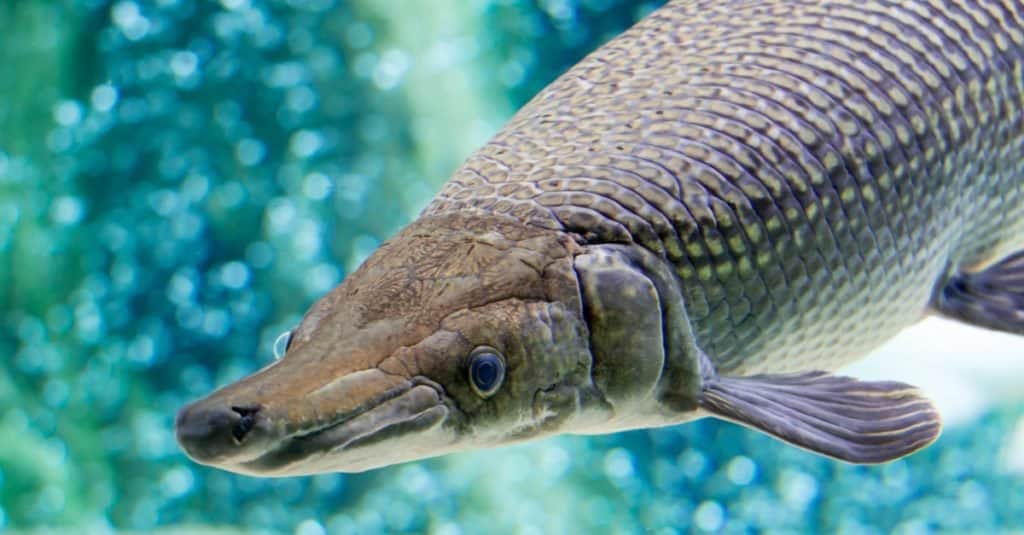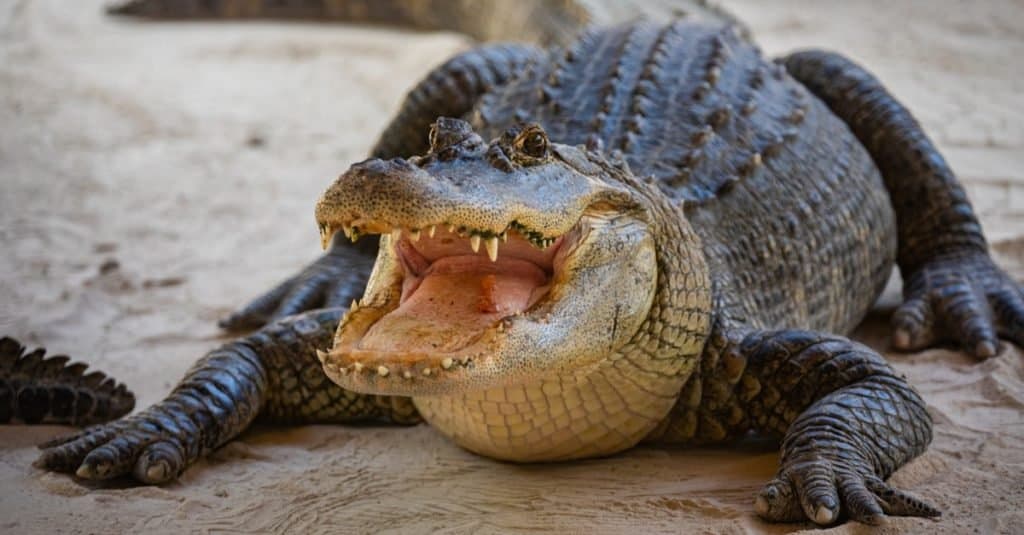Also known as the Rio Bravo or Rio Bravo del Norte, the Rio Grande River is one of the most vital waterways in the southwestern United States. Additionally, the valley carved out by the river, the Rio Grande Valley, possesses crucial agricultural, recreational, and environmental importance to the region. Each year, nearly 6 million people rely on the Rio Grande for crop irrigation and drinking water.
The Rio Grande River ranks as an American Heritage River. This designation exists to provide additional resources for the preservation of rivers with particular environmental, economic, and cultural significance. It’s clear that the river has tremendous economic importance to the people around it. That said, what sort of creatures rely on the river for support, and what kinds of animals live within its depths? Let’s take a look at what lives at the bottom of the Rio Grande River.
About the Rio Grande River

The Rio Grande begins in the Rio Grande National Forest in southwestern Colorado. From there, it flows south into New Mexico before cutting southeast. The river acts as part of the border between Mexico and the United States, with Texas on one side and the Mexican states of Nuevo Leon, Coahuila, and Chihuahua on the other. In total, the river runs for 1,896 miles until it empties into the Gulf of Mexico.
According to fossil records, people have lived around the Rio Grande River for around 12,000 years. The most famous of these groups, the Pueblo, dominated the Rio Grande Valley between 1130 CE and 1600 CE. The permanent arrival of the Spanish to the Rio Grande Valley in 1598 CE marked the beginning of a new chapter in the region’s history. For the next 230 years, the Spanish controlled most of the Rio Grande Valley. However, border disputes in the 1830s ultimately boiled over into justification for US forces to invade Mexico. The conflict ended with the Rio Grande officially recognized as the border between the U.S. and Mexico.
Today, the Rio Grande River serves as an essential waterway for the irrigation of farmland throughout the region. Unfortunately, increased demand for crop irrigation and clean drinking water has led to over-appropriation of the river. Moreover, persistent drought in the region has exacerbated the problem of not having enough water to go around. As a result, the Rio Grande cannot keep up with demand, and sections of the river frequently dry up. Talks over water rights between the states that share the river continue to this day. Hopefully, experts and authorities can devise solutions to better manage the river’s water. In doing so, they will ensure that future generations can enjoy the benefits and splendor of the Rio Grande.
Is the Rio Grande River Dangerous?

The Rio Grande runs for 1,896 miles until it empties into the Gulf of Mexico.
©designwithval/Shutterstock.com
For 1,254 miles, the Rio Grande River operates as the border between Texas and Mexico. It acts not only as an imaginary barrier but also as a potent physical barrier separating the two states. Unfortunately, the internal politics of various countries in Central and South America entice people to try to enter the United States by whatever means possible. Every year, thousands of migrants attempt to cross into the United States through Mexico. Many of these people choose to enter the country via the Rio Grande. According to U.S. Customs and Border Patrol, hundreds of migrants cross the Rio Grande at night. While most successfully complete the crossing, every year, a select few fail in the attempt.
Every year, several people drown while attempting to cross the Rio Grande River. The river can be especially dangerous to cross due to its varying water level. Numerous dams control the flow of water along the river. When these dams release water, this can cause water levels to rise downstream extremely quickly. Additionally, the Rio Grande features harmful levels of bacteria and pollution. Pollutants flow into the river from chemical pesticides and fertilizers as well as from factories located upstream. These pollutants and bacteria can make you extremely sick, which is why most people choose to cross the river by boat.
What Lives at the Bottom of the Rio Grande River?
The Rio Grande River supports an incredible array of plants and animals. In total, you can find around 1,200 plant species and 700 vertebrate species around the river. Along its shores live mammals such as Canada lynx, bighorn sheep, elk, and black bears. You can also find reptiles like the diamondback water snake or speckled racer snake. Myriad birds feed and roost near its waters, including sandhill cranes, green jays, and plain chachalacas. Additionally, over 120 different fish species live in the Rio Grande. Keep reading to learn more about a few of the creatures that you can find at the bottom of the Rio Grande River.
Rio Grande Silvery Minnow
Also known simply as the Rio Grande minnow, the Rio Grande silvery minnow belongs to the silvery minnow genus Hybognathus. These small minnows feature silvery scales and small eyes and mouths. At full size, adults can grow up to 3.5 inches long. They mainly feed on aquatic vegetation, including algae that can damage the environment if left unchecked. Historically, you can find Rio Grande silvery minnows near the bottom of the river. Unfortunately, the overuse of the river’s water has led to significant habitat loss. Today, Rio Grande silver minnows live in less than 5% of their native habitat. As a result, this tiny fish ranks as one of the most endangered fish throughout North America.
Alligator Gar

Alligator gar is one of the largest freshwater fish in North America.
©Bill Roque/Shutterstock.com
The alligator gar is a member of the gar family Lepisosteiformes. Sometimes referred to as “living fossils,” the first alligator gar emerged approximately 100 million years ago. In terms of appearance, they somewhat resemble alligators due to their elongated snouts and teeth, hence their name. Like alligators, they often look slow in the water, but in reality, can lash out extremely quickly to ambush prey. The body appears mostly olive or brown but can look light gray or yellow on the belly. Adults can grow up to 8 feet long, making them one of the largest freshwater fish in North America. For years fishers considered them a nuisance, but modern anglers prize them thanks to their large size.
Rio Grande Siren
The Rio Grande siren is a disputed subspecies of siren, an aquatic salamander in the family Sirenidae. Debates continue to rage as to whether the Rio Grande siren represents a subspecies of lesser siren (Siren intermedia) or greater siren (Siren lacertina), whereas other experts consider the Rio Grande siren its own species. Regardless, the Rio Grande siren inhabits grassland ponds along the Lower Rio Grande Valley. Most specimens measure around 2.25 feet long, which measures slightly longer than a typical lesser siren. They possess two limbs with for toes on each leg. The body appears either olive, blue-gray, or black on top, while the underside looks light gray. Meanwhile, some Rio Grande sirens feature noticeable spots. The Rio Grande siren faces significant threats from pollution and habitat loss. However, its closest taxonomic relative, the lesser siren, remains a species of Least Concern.
American Alligator

Alligator sightings are increasing along the lower stretches of the Rio Grande.
©Mia2you/Shutterstock.com
Also known as the common alligator, the American alligator is the largest reptile in North America. Adult males can grow between 11.2 and 15.1 feet long and weigh up to 1,000 pounds. These apex predators eat a wide variety of prey, including birds, mammals, fish, amphibians, and other reptiles. They possess one of the strongest bites in the world, with a measured bite force of 2,980 PSI. While not historically found throughout much of the Rio Grande, alligator sightings are increasing along the lower stretches of the river. In the past, overhunting and habitat loss severely impacted American alligator populations. Today, they enjoy protections under the Endangered Species Act and Cities. The IUCN lists the American alligator as a species of Least Concern.
Rio Grande Sucker
The Rio Grande sucker is one of the more unusual-looking fish in the Rio Grande River. A member of the sucker family Catostomidae, this bottom-feeding fish is endemic to the Rio Grande basin. On average, specimens measure 5.2 to 6.7 inches long, with females measuring larger than males. Like other suckers, they possess a sucker-like mouth that they use to scrape algae off of rocks. The body appears mostly brownish-green with dark blotches, although breeding males develop red stripes along their sides. The Rio Grande sucker faces numerous threats, including habitat loss, pollution, and competition with non-native species. While not currently protected under federal law, numerous groups argue it should be listed as an endangered species.
Interesting Facts
- Rio Grande translates to “Big River” in Spanish. In Mexico, it goes by the name Rio Bravo or Rio Bravo del Norte, meaning “Furious River” or “Agitated River of the North,” respectively.
- The Rio Grande is the fourth longest river in the United States, measuring approximately 1,896 miles long.
- In the 1830s, the river marked the border between the Republic of Texas and Mexico. However, Mexico considered the Nueces River to be the true border. This tension eventually erupted into the Mexican-American War.
- While the Rio Grande features a maximum depth of 60 feet, much of the lower river runs dry due to overuse.
- Every year, thousands of migrants cross the Rio Grande to reach the United States.
The photo featured at the top of this post is © iStock.com/Greg Meland
Sources
- , Available here: https://www.foxnews.com/politics/latest-migrant-deaths-rio-grande-highlight-extreme-dangers-facing-border-crossers
- , Available here: https://www.blm.gov/visit/rio-grande-wild-and-scenic-river
- , Available here: https://www.nps.gov/articles/mammals-of-the-rio-grande.htm
Thank you for reading! Have some feedback for us? Contact the AZ Animals editorial team.






